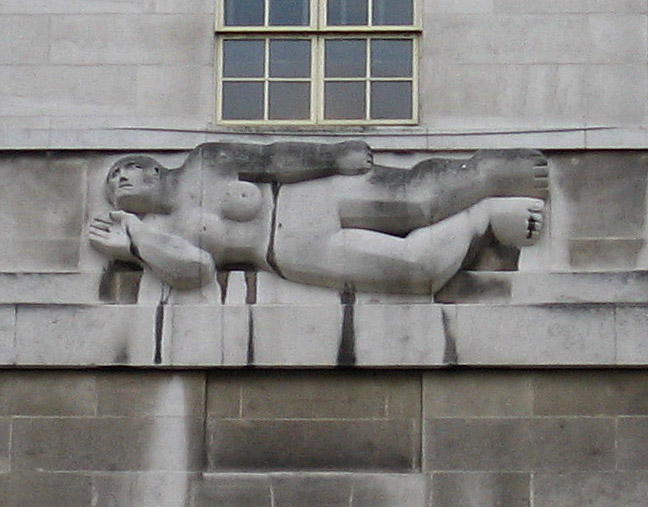Henry Spencer Moore, born July 30th, 1898 was an English sculptor and artist. He volunteered for service during World War I, and was injured in a gas attack. With a education grant from the British army for his service, Moore attended the Leeds School of Art in 1919. As a student, his more modern style was in contention with his teachers who held classical values. In 1924, Moore traveled to Italy and studied the works of the Old Masters. He also viewed the Chac Mool in Paris, which had a reclining figure and partly inspired Moore’s most famous motif. Upon his return to London, Moore taught at the Royal College of Art, did commissioned work including West Wind, and worked on his own pieces. During World War II, Moore drew Londoners sleeping in the London Underground, and coal miners in “At the Coal Face. A Miner Pushing a Tub.” His drawings were included in the War Artists’ Advisory Committee’s Britain at War exhibit which toured North America. Moore’s mother died two years before his wife, Irina Radetsky, gave birth to their daughter Mary Moore in 1946. Moore’s work turned towards depicting mothers and children. In the ‘50s, Moore received many commissions to be installed in public spaces. 25 years to the minute after Enrico fermi and his team achieved the first controlled, self-sustaining nuclear reaction, Moore unveiled Nuclear Energy on the campus of the University of Chicago. In his later years, Moore continued to fulfill commission requests, and was the subject of retrospectives, documentaries, films.
Chac Mool
West Wind
Women and Children in the Tube
At the Coal Face. A Miner Pushing a Tub
Family Group
Reclining Figure
Mother and Child
Upright Interior Form
Vertebrae


_(Art.IWM_ART_LD_759).jpg)
_(Art.IWM_ART_LD_2240).jpg)
.jpg)


No comments:
Post a Comment